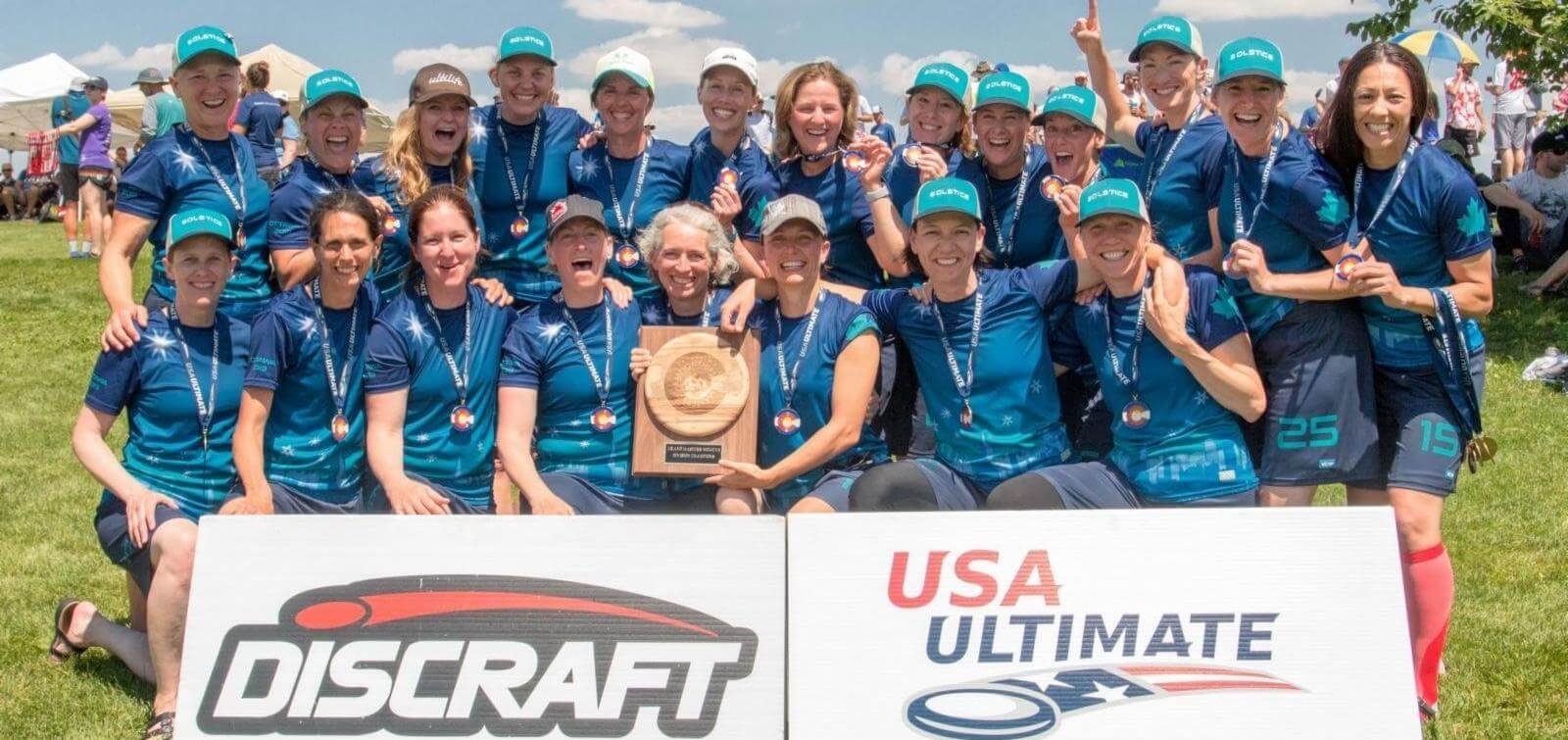Posted on Tuesday, July 30th, 2019

Photo: Professor Kindha Gorman top row 3rd from left, Professor Karen Kavanagh top row 8th from left.
Photo credit: Ken Forman (UltiPhotos)
Two Algonquin College professors have brought home the gold!
Kindha Gorman and Karen Kavanagh competed at the USA Ultimate Frisbee National Championship in Aurora, Colorado from July 19-21. Their team, Solstice, competed in the Grand Masters Women Division (Aged 37+) in grueling heat that reached more than 37 degrees. Read more >
Posted on Friday, July 26th, 2019

Need the perfect place to take a quick lunch break, or enjoy an afternoon stroll? The gardens at the AC Horticulture Centre are a great place to relax, study, and enjoy the beautiful scenery that this hidden oasis has to offer. Narcity Ottawa recently featured the centre, highlighting all the best spots to catch some much needed relaxation on a hot, summer day. Read more >
Posted on Thursday, July 25th, 2019

Algonquin College Graphic Design graduate, Alisha Giroux, has designed the first Canada-shaped coin, which was recently issued by the Royal Canadian Mint. Here is what Alisha had to say about her experience with illustration and design, and how Algonquin College helped give her the tools she needed to succeed. Read more >


